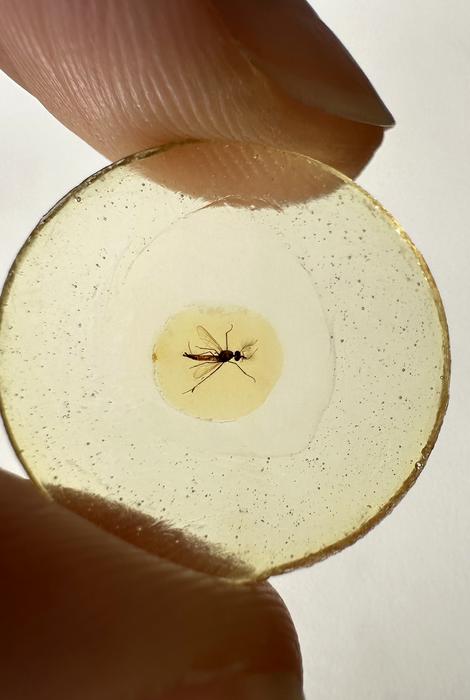
- 🦟 The oldest fossil mosquito, trapped in Lebanese amber from the Lower Cretaceous period, challenges the current understanding of mosquito evolution.
- 🧬 This ancient mosquito, 30 million years older than previous fossils, suggests male mosquitoes might have fed on blood, unlike today.
- 🔍 The well-preserved fossil, Libanoculex intermedius, indicates a potential early blood-feeding behavior in both male and female mosquitoes.
In a striking discovery, researchers have unearthed the oldest-known mosquito fossil in amber from Lebanon’s Lower Cretaceous period. The pristinely preserved fossil reveals two male mosquitoes equipped with piercing mouthparts, suggesting ancient males fed on blood, unlike their modern counterparts. Presently, only female mosquitoes suck blood. This discovery not only pushes back the timeline of mosquito evolution but also challenges pre-existing beliefs about their feeding habits.
Challenging blood-feeding assumptions

The fossilized mosquito, encased in amber, offers a window into the Cretaceous period, a time marked by significant shifts in the evolution of life and the rise of angiosperms (flowering plants) about 130 million years ago.
“Lebanese amber is, to date, the oldest amber with intensive biological inclusions, and it is a very important material as its formation is contemporaneous with the appearance and beginning of radiation of flowering plants, with all that follows of co-evolution between pollinators and flowering plants,” says Dany Azar of the Nanjing Institute of Geology and Palaeontology at the Chinese Academy of Sciences and the Lebanese University.
The researchers note that the Culicidae family, to which mosquitoes belong, is believed to have originated in the Jurassic period (200 to 145 million years ago) based on previous studies of mosquito genomes. However, it is extremely difficult to find fossilized insects from so far back in time. Nevertheless, this amber fossil — now the oldest mosquito fossil to date — is dated to the early Cretaceous. It’s 30 million years older than previous evidence.
The evolution of mosquito blood-feeding
However, what truly sets this discovery apart is the nature of the fossilized mosquito itself. Typically, female mosquitoes are known for their blood-feeding behavior, a trait that has made them infamous as vectors for various diseases. Males, on the other hand, are generally nectar feeders.
The new fossil, identified as Libanoculex intermedius, tells a different story. This ancient male mosquito exhibits well-developed, sharp, and denticulate (tooth-like) mouthparts meant to pierce through skin. Such a finding implies that ancient male mosquitoes might have been blood feeders (hematophagous).
Moreover, the presence of certain types of sensilla (sensory organs) on the insect’s mouthparts suggests a sensory adaptation that could have aided in detecting hosts or mates, further supporting the hypothesis of hematophagy.
This discovery sheds light on the “ghost-lineage gap” in the mosquito fossil record. It suggests that blood-feeding behavior may have been present in both sexes in ancient times, only to be lost in males later in their evolutionary history. This raises intriguing questions about the ecological and evolutionary pressures that might have led to such a significant behavioral shift.
The findings appeared in the journal Current Biology.


